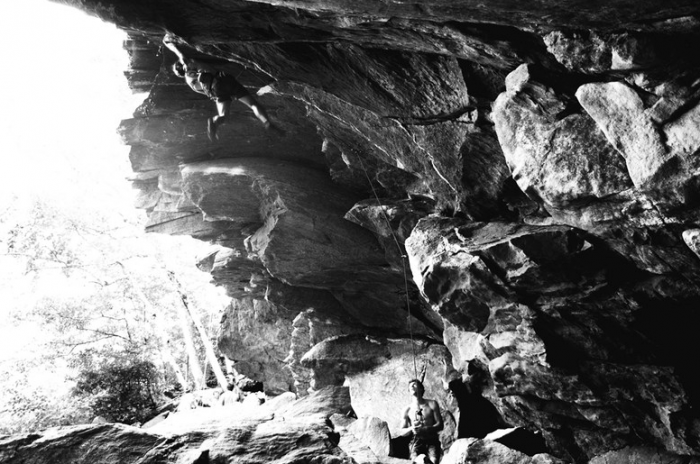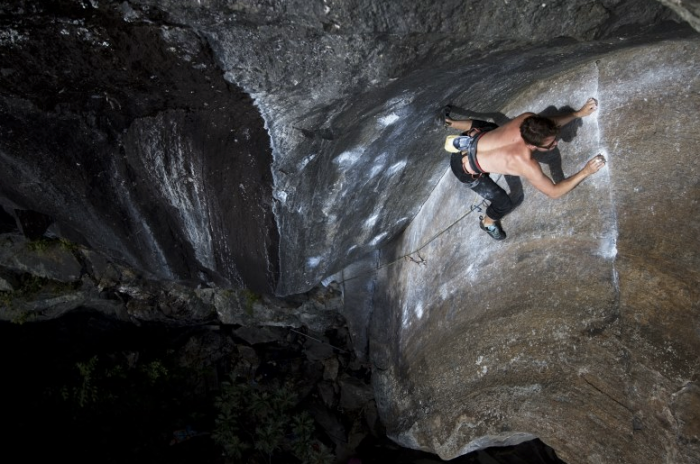 Anyone can learn to rock climb and boulder. You don’t have to have crazy upper-body strength, guts of steel and wallet-breaking gear to join the ranks of climbers.
Anyone can learn to rock climb and boulder. You don’t have to have crazy upper-body strength, guts of steel and wallet-breaking gear to join the ranks of climbers.
But for beginners, the sport offers both addictive rewards, getting your adrenaline pumping and letting you enjoy some premium views with interesting people while you’re at it, and a new culture with unique physical and mental challenges. We consulted with climbing experts including Randi Alegre, instructor and youth coach at New York City’s The Cliffs at LIC, to bring you these seven tips for progressing as a climber and having fun in the process.
7 Tips to Improve Your Climbing (and to Have Fun Doing it)
BE PATIENT
It’s important to remember that in climbing, as in life, the joy is in the journey. It’s true that the goal of any bouldering problem or climbing route is always to get to the top, but don’t cheat yourself out of enjoying all those small hurdles you have to overcome on the way up. Stay in the moment, and not only will you have more fun, but you’ll set yourself up for success by keeping your focus on the move at hand. According to Alegre, if you think too far ahead, “You won’t be ready for the next sequence…and you’ll fail to execute a crucial maneuver.” Solve one puzzle piece at a time and savor each small success.
At the same time, don’t get discouraged if progress in your climbing is slower than you’d like. Alegre explained that while it’s possible to make speedy gains in strength, your body can’t adapt to the unique demands of climbing at the same rate – “all those muscles you never knew you had and tendons and ligaments you’ve never conditioned.” With practice, you’ll get there. But be patient!
GET TO KNOW YOUR OWN STYLE
One of the great things about climbing is there’s no perfect way to do it. Some even call it an “art of self-expression.” It’s all about ascending as efficiently as possible and having fun doing it.
No one will deny that learning from more experienced climbers is an excellent way to improve your technique and ensure you’re climbing safely, but it’s also true that what works for one person may not work for you, and vice versa. Alegre suggests taking the time to get to know yourself and discover your own rhythm and methodology for reaching the top.
Climb in as many different settings and with as many different people as possible. For those confined to an urban jungle, see how many climbing gyms you can try out. If you’re lucky enough to have nature at your doorstep, aim to train on various types of crag. Even attempting the same climbing route or problem in a few different ways can help you learn what works for you and what doesn’t.

USE YOUR WHOLE BODY
It’s common for beginner and intermediate climbers to think their arms are the only tools than can pull them up the rock wall. However, letting go of this misconception and learning to trust and use your whole body – “everything from your toes to your nose along with an iron will,” as Alegre put it – is the first barrier every climber has to overcome in order to progress. Alegre introduces his students to the idea of walking up a climb rather than pulling yourself up it. Instead of initiating the upward movement with your arms, practice standing up before you flex your arms.
When you’re climbing with ropes, learn to let your body rest at comfortable points on a route. When you get to a place with solid holds, rest with your arms stretched straight and knees bent. Then, let one arm go and shake it out. Practice these two moves on easy routes until they become ingrained. You’ll need them to prevent the dreaded pump when you tackle harder challenges down the road.
TRAIN YOUR BRAIN
Let’s face it – training your body is non-negotiable in order to improve your climbing. However, focusing on physical conditioning without training your mental game is like trying to climb with long fingernails and clunky shoes. You may find your way to the top, but you’ll likely encounter some unnecessary frustrations along the way.
Before you even hit the wall, take a moment to mentally map out the route and visualize yourself reaching the top. Train your confidence and build a solid base by practicing on many different types of routes with all kinds of holds. At the same time, some experts say to stick mostly to routes at your level until you feel confident and can climb around 80 percent on-sight. It can be fun to try harder challenges every once in a while to see what the next level feels like, but remember, you’re building a base!

STAY SAFE
Before you get vertical, no matter if it’s at the gym or in nature, dedicate yourself to becoming an expert on the proper safety procedures. After all, your life depends on it. Take a course at a gym with a qualified trainer. When you pass the final exam, practice intensely until everything you’ve learned becomes second nature.
Also, make a point to train with more experienced climbers whenever possible to solidify your knowledge and pick up good habits. In fact, choosing your climbing companions is not something to take lightly. It’s important to climb with people you trust, who motivate you and who you enjoy spending time with to stay safe and have the most rewarding experience possible.
GET OUTDOORS
Indoor facilities are great for training, learning, and especially, coming into contact with the climbing community. But nothing will get you more excited and motivated to climb than getting out into nature.
Whether you’re bouldering or rock climbing, once you’ve mastered the safety procedures and feel comfortable indoors, find a way to get on some natural rock. Don’t let a lack of gear – or company – stop you. Contact your local climbing gym or outdoor retailer to get in the know about local sites, equipment rental and any organized trips that may be on the horizon. Then, pack some water and healthy snacks and make a day of it.
LEARN THE LANGUAGE
From the first day you enter a climbing gym, you’ll get the sense you’ve stumbled upon a unique subculture complete with its own way of speaking, moving and interacting. The tribe-like vibe can be intimidating for newcomers, but wander deeper into this world and you’ll find a social, supportive community.
The first step to feeling more comfortable is getting to know the jargon. Don’t be afraid to ask others if you don’t understand a term or expression – even expert climbers had to start somewhere. For more studious types, online climbing dictionaries on sites like Climbing.com can be useful. Learning the lingo will ease your interaction with fellow climbers on and off the wall. But more importantly, flawless communication is critical for safety, especially when climbing with ropes.
Another tip for feeling both more authentic and more comfortable when you climb? Invest in a pair of climbing shoes. They don’t have to be on-brand or expensive, but they should fit your feet snugly without making you suffer.
photos by Randi Alegre
- 5 of the Most Extreme (Ancient) Sports - 12 November, 2014
- 8 Ways to Balance Your Climbing Training - 23 October, 2014
- How to Improve Your Climbing - 2 September, 2014





